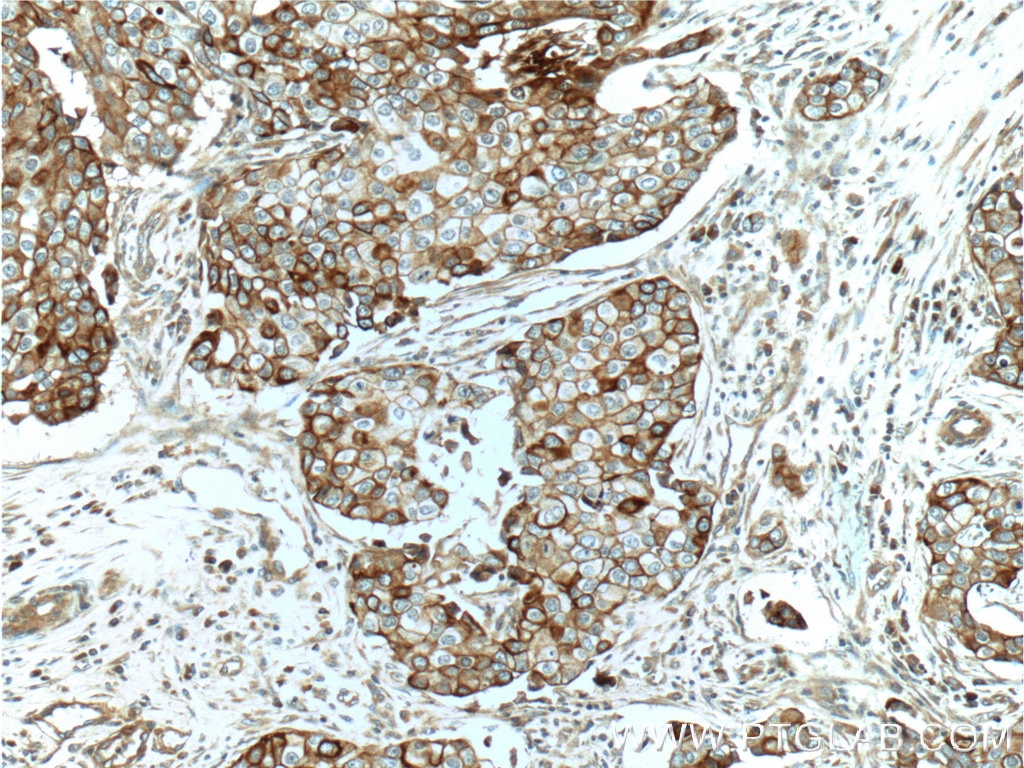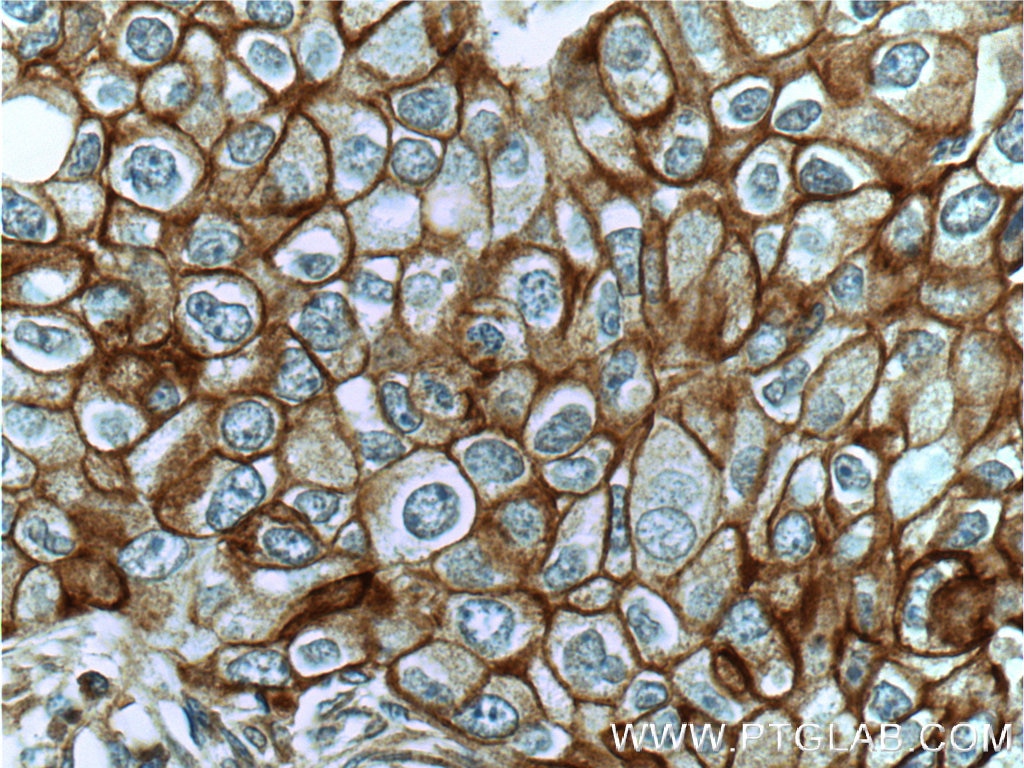Tested Applications
| Positive WB detected in | HeLa cells |
| Positive IHC detected in | human breast cancer tissue, human colon tissue Note: suggested antigen retrieval with TE buffer pH 9.0; (*) Alternatively, antigen retrieval may be performed with citrate buffer pH 6.0 |
Recommended dilution
| Application | Dilution |
|---|---|
| Western Blot (WB) | WB : 1:500-1:1000 |
| Immunohistochemistry (IHC) | IHC : 1:50-1:200 |
| It is recommended that this reagent should be titrated in each testing system to obtain optimal results. | |
| Sample-dependent, Check data in validation data gallery. | |
Published Applications
| WB | See 2 publications below |
| IHC | See 1 publications below |
Product Information
19971-1-AP targets c-Met (N-terminal) in WB, IHC, ELISA applications and shows reactivity with human, mouse, rat samples.
| Tested Reactivity | human, mouse, rat |
| Cited Reactivity | human, mouse |
| Host / Isotype | Rabbit / IgG |
| Class | Polyclonal |
| Type | Antibody |
| Immunogen |
Peptide Predict reactive species |
| Full Name | met proto-oncogene (hepatocyte growth factor receptor) |
| Calculated Molecular Weight | 156 kDa |
| Observed Molecular Weight | 140 kDa, 50 kDa |
| GenBank Accession Number | NM_000245 |
| Gene Symbol | MET |
| Gene ID (NCBI) | 4233 |
| Conjugate | Unconjugated |
| Form | Liquid |
| Purification Method | Antigen affinity purification |
| UNIPROT ID | P08581 |
| Storage Buffer | PBS with 0.02% sodium azide and 50% glycerol, pH 7.3. |
| Storage Conditions | Store at -20°C. Stable for one year after shipment. Aliquoting is unnecessary for -20oC storage. 20ul sizes contain 0.1% BSA. |
Background Information
c-Met (also named as MET or HGFR) is a receptor tyrosine kinase that transduces signals from the extracellular matrix into the cytoplasm by binding to hepatocyte growth factor/HGF ligand. c-Met regulates many physiological processes including proliferation, scattering, morphogenesis and survival. The primary single chain precursor protein is post-translationally cleaved to produce the alpha and beta subunits, which are disulfide linked to form the mature receptor. Overexpression and/or mutation of c-Met has been reported in various human malignancies, including lung cancer, breast cancer, head and neck cancer, gastric cancer, colorectal cancer, bladder cancer, uterine cervix carcinoma, and esophageal carcinoma, c-Met could serve as an important therapeutic target (PMID: 26036285). This antibody recognizes the N-term of c-Met.
Publications
| Species | Application | Title |
|---|---|---|
Oncogene A regulatory circuit composed of DNA methyltransferases and receptor tyrosine kinases controls lung cancer cell aggressiveness. | ||
Carcinogenesis MicroRNA-34a inhibits migration and invasion of colon cancer cells via targeting to Fra-1. | ||
Am J Pathol PIK3CG Is a Potential Therapeutic Target in Androgen Receptor-Indifferent Metastatic Prostate Cancer. |












